Contents

Air conditioning systems move heat. This is in contrast to the popular belief that these systems generate cold air. What they do is absorb the indoor heat and release it outdoors. Homes eventually cool down after several heat transfer cycles, so you get a comfortable home. Most of the work is done by the evaporator coils and condenser coils. They may look alike, but these two components function differently to achieve the desired results. Keep reading to learn more about the condenser vs evaporator coil.
Air Conditioner Condenser Vs. Evaporator Coil: What’s The Difference?
First, let’s get into how central air conditioners operate. The system has two parts: the indoor and outdoor units. They are connected via tubes containing a chemical known as refrigerant. This substance can absorb high amounts of heat. It can also change state, going from a liquid to gas and vice versa, per the pressure. The refrigerant travels from the indoor unit to the outdoor unit and back again. Let’s take a closer look at how the different coils fit in this situation.
Related Article: Top HVAC Installation Mistakes to Avoid
The AC Unit’s Evaporator Coil
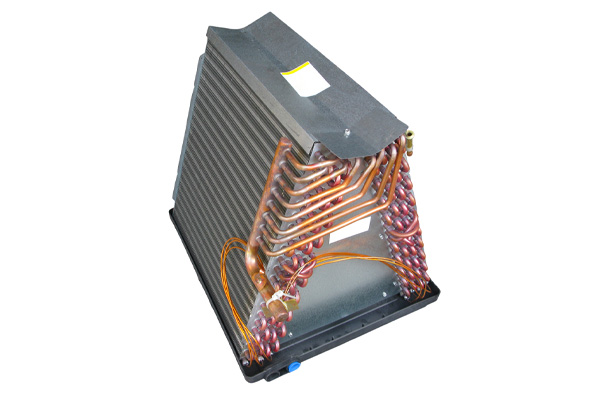
The evaporator coil is inside the indoor unit. It is made of copper pipes, where the frigid refrigerant travels through. The coil is continuously exposed to warm indoor air that the system blower pulls in. The refrigerant in the evaporator coil tubes absorbs the heat from the air. The water vapor around the cold coils condenses into water, helping reduce indoor humidity. This leaves the air cooler and drier, and it is then pushed back inside for you to enjoy.
The refrigerant continues to pass through the system. It becomes hotter than when it enters the evaporator coil. It will go through an insulated conduit until it goes to the outdoor unit. This component is a large cabinet containing the compressor and condenser coils. The refrigerant goes inside the compressor first. In it, the refrigerant is pressurized to raise its temperature. Once it is in a superheated state, releasing the heat from the refrigerant to the outdoor air becomes more efficient.
Related Article: Air Conditioner Makes Loud Noise When Starting
The Air Conditioner’s Condenser Coil
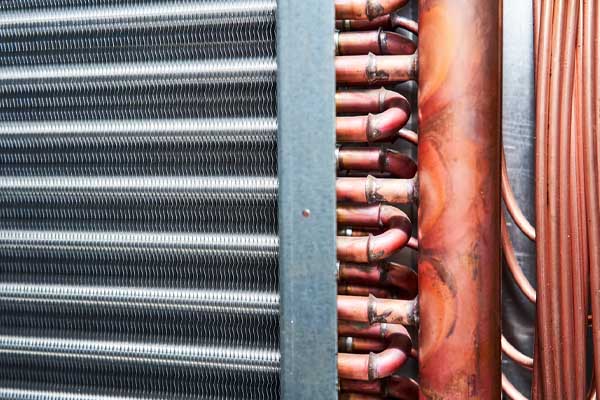
If you compare the evaporator coil and condenser coil, you will see that they have similar designs and are made of the same materials. What differs is their function. The evaporator coil pulls in heat while the condenser coil pushes it out. This catch-and-release process is repeated several times until the preferred thermostat setting is achieved. You may hear the compressor and fans emit a low hum as they operate in the distance.
The hot refrigerant vapor releases heat to the outdoor air, allowing it to cool down and return to its liquid state. An outdoor fan helps this process by blowing outdoor air through the condenser coil. Once the refrigerant turns into a liquid, it is ready to go back to the indoor unit’s evaporator coil. It passes through an expansion valve that turns it into vapor again while cooling it. This way, it can absorb more heat for its next cycle.
Related Article: Major Consequences Of Not Replacing Your Home Air Filter
Cooling System Coil Upkeep
Like other air conditioner parts, coils require periodic maintenance to operate at their best. This applies to both the condenser coils and evaporator coils. Not much is needed to prevent common issues. You only need to book annual air conditioner maintenance from your local HVAC technician. They will not only maintain the coils, but they will also examine other components to ensure everything is in good shape. They will go through the standard AC maintenance checklist to ensure peak energy efficiency and an extended lifespan.
Related Article: How Do Ductless Air Conditioners Work?
Common Air Conditioner Coil Issues
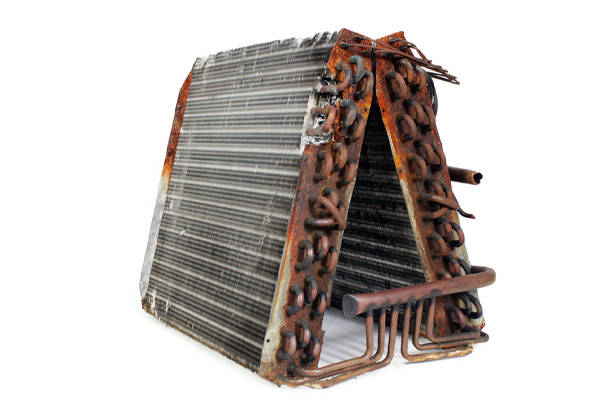
Here are several of the common problems you may encounter with your air conditioner coils:
Corrosion
Evaporator coils are made from aluminum and copper. They do not rust like steel but may still corrode and pit after some time. As a result, they may develop cracks and holes. These problems may not be immediately apparent, but occupants will feel their effects because the refrigerant will slowly leak out of the system. Hazardous chemicals may permeate your home. The air conditioner’s performance will also plummet because of the lack of refrigerant to absorb indoor heat. HVAC contractors can find and seal leaks before topping up the system with more refrigerant.
Dirt
Dust can get inside the air conditioner system. Some dust may settle on the coils and form a thick insulating layer. This drastically reduces the heat transfer, so the coils cannot do their respective tasks. The fans will also need to run longer to achieve the set temperature. This hastens wear and tear on different parts of the air conditioner. It also spikes energy use, increasing your home’s energy bills. Prevent this from occurring through regular maintenance.
Related Article: What Does An Air Conditioner’s SEER Rating Actually Mean?
Mold
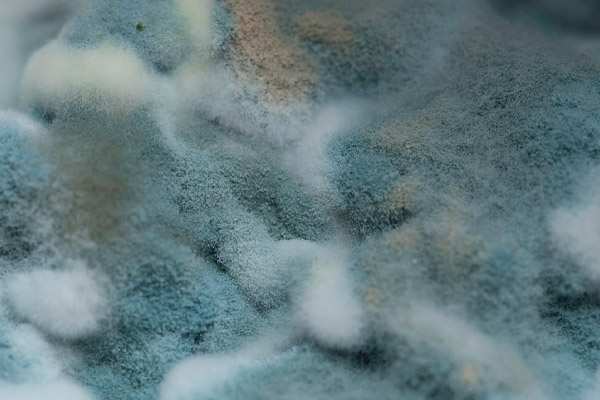
Indoor units have a dark and damp interior. They don’t receive sunlight to fight off bacteria and fungi. This makes them the ideal environment for mold and mildew growth. They can thrive inside the system and scatter their spores throughout your home via the ductwork. This significantly reduces indoor air quality and negatively affects your family’s health. They may also keep the air from flowing through the evaporator coil’s fins.
Debris
The outdoor unit is susceptible to debris infiltration. For instance, branches, dry leaves, and waste materials can get into the system. They may fall to the base and block airflow to the condenser coil. As a result, the release of heat from the refrigerant to the outdoor air will be slower. Avoid this by ensuring the outdoor unit’s perimeter is free from plants and vegetation. It is also recommended to conduct periodic air conditioner coil cleaning.
Related Article: Why Is Smoke Coming Out Of The Vents When AC Is On?
Air Conditioner Refrigerant Problems
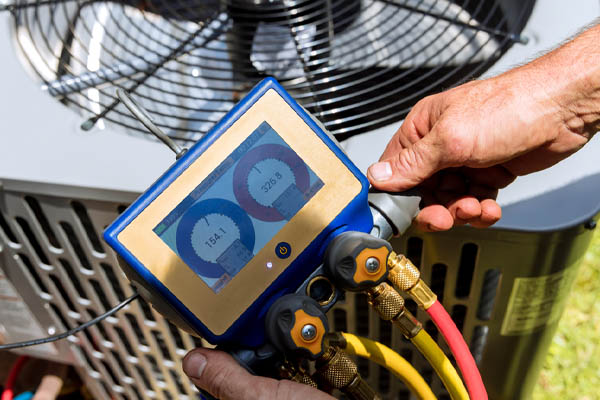
Many reasons can be behind your air conditioner providing insufficient cooling for your home. If your system ran fine before, you might have a low refrigerant issue. Remember that the coils require a specific amount of refrigerant to gather enough heat and throw it out of the house. If there isn’t enough refrigerant, your home will remain warm during the summer. It may also cause the coils to freeze and the system to shut down. Contact a reliable HVAC technician to assist you if this problem occurs.
Conclusion
Air conditioners are cleverly designed to move heat around to ensure your home or business stays cool during the hot season. They utilize a refrigerant that goes through the coil. The evaporator coil absorbs the indoor heat while the condenser coil releases heat to the environment. They work hand-in-hand to generate the desired results. Be wary of common coil issues. Ensure you book professional maintenance at least once a year to avoid these.
Related Article: How Does My Air Conditioner Cool My Home?
Call Wilcox Energy For All Your HVAC Needs

For superior heating and cooling services throughout the southern Connecticut region, call Wilcox Energy. Our team consists of the best professionally certified technicians who offer high-quality HVAC repairs, tune-ups, repairs, replacements, and installations. All our friendly technicians are highly skilled, knowledgeable, and experienced in servicing your HVAC system correctly.
Wilcox Energy guarantees to have the region’s most cost-effective heating and cooling service rates. Our maintenance services can help your home or business achieve increased energy efficiency and comfort with reduced energy costs. If you need an HVAC repair or replacement system, we can provide the best solution while working with your budget. All of our work is guaranteed because your satisfaction is crucial to us. Call now to schedule a service appointment with Wilcox Energy. We offer free, in-home estimates.
For more information about our HVAC services, be sure to contact Wilcox Energy. You can click here to contact us, or you can call us at (860) 399-6218 to find out more. We offer a full line of heating and cooling repairs, maintenance services, and installations. Click the link to view our service area.
